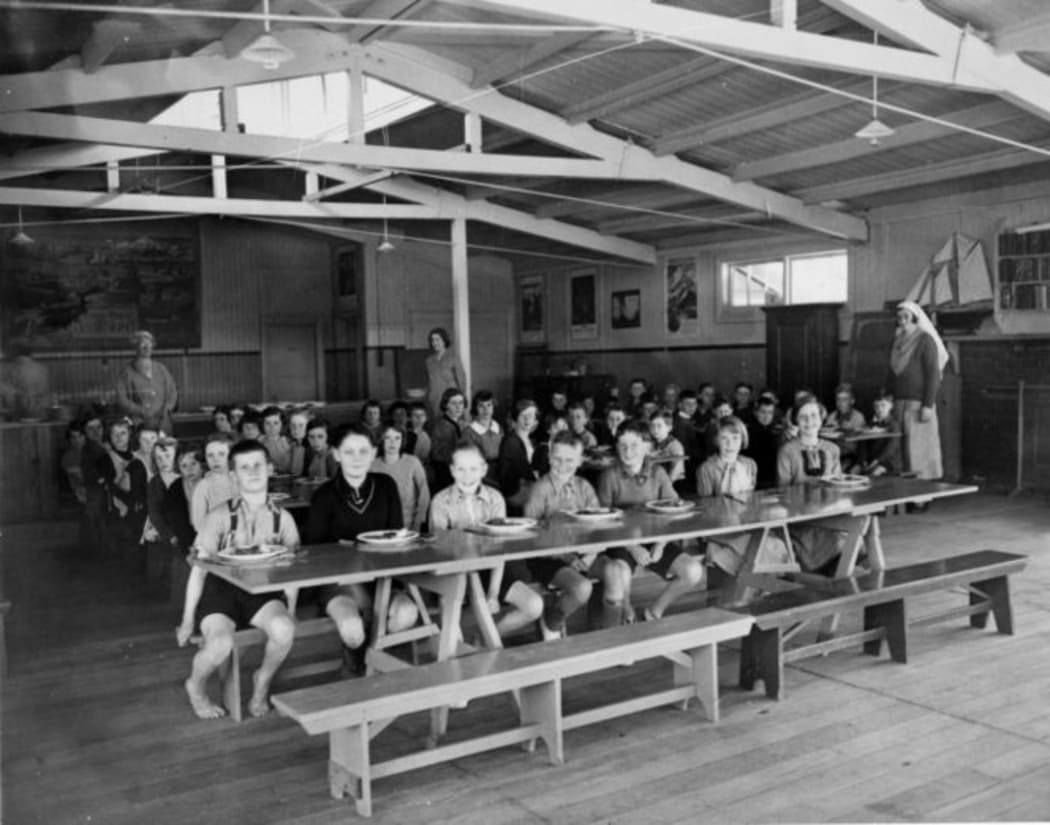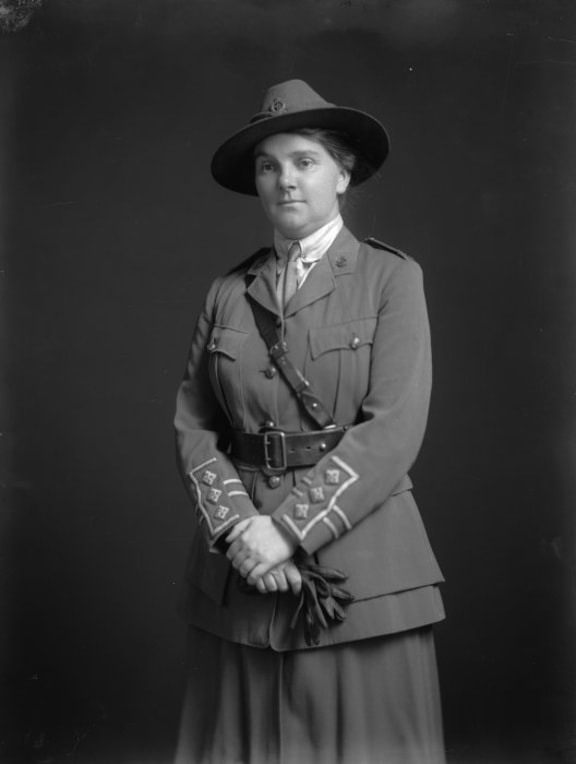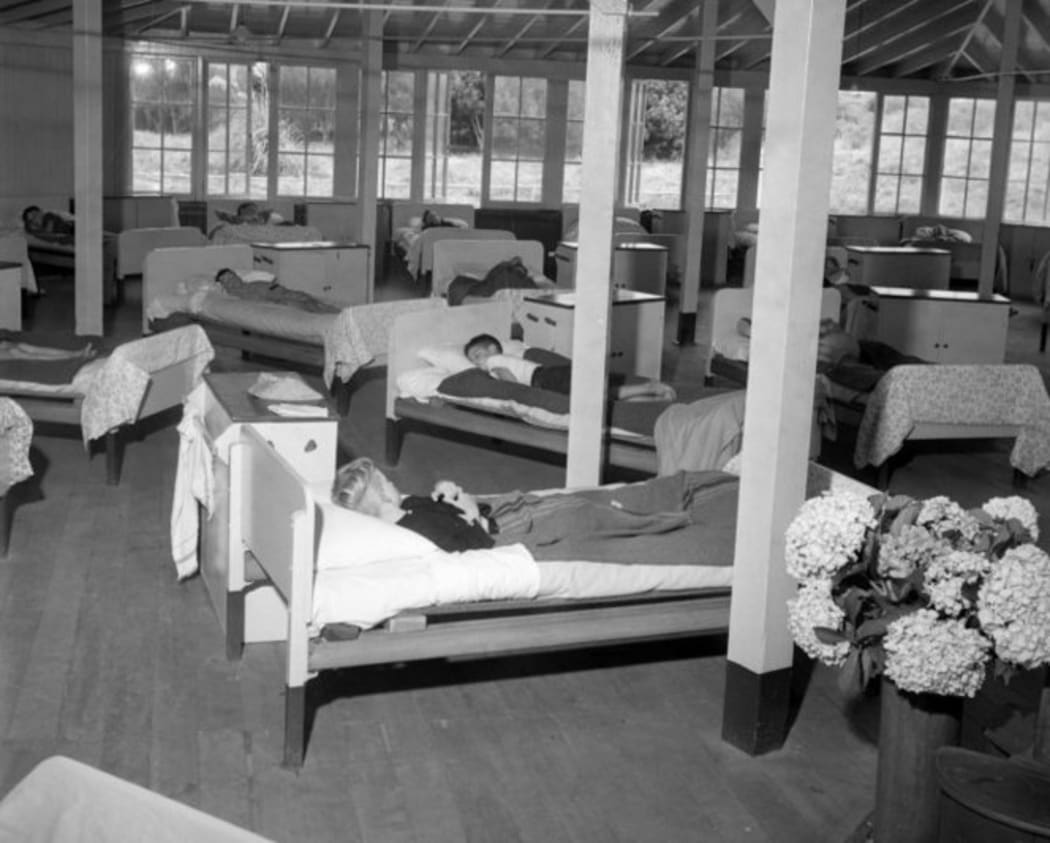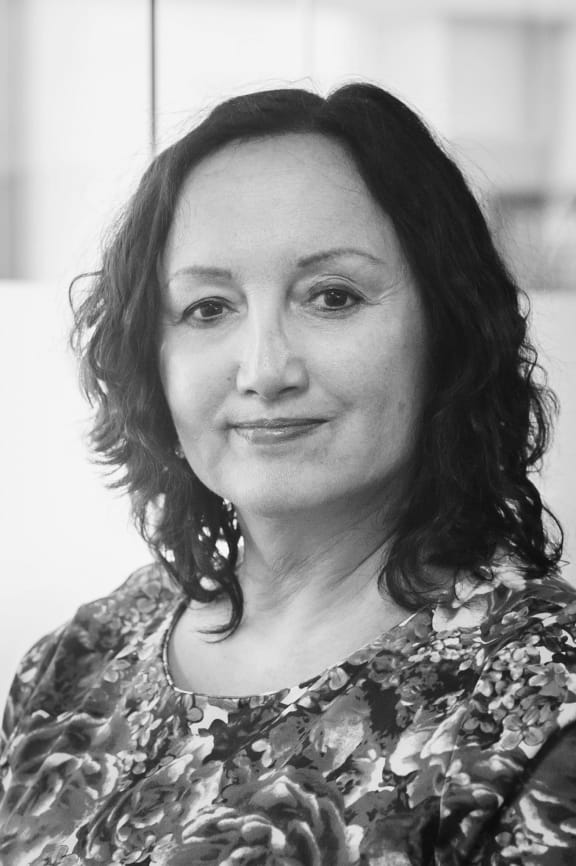Health camps have been helping sickly Kiwi kids get better for a century now. What was it like to be at one? And why are the camps today failing to thrive?

Children in the dining room, Otaki health camp. Evening post (Newspaper. 1865-2002) :Photographic negatives and prints of the Evening Post newspaper. Ref: 1/2-162598-F. Alexander Turnbull Library, Wellington, New Zealand. /records/23250158 Photo: Alexander Turnbull Library, Wellington, New Zealand.
Moana Sinclair had a tough start in life.
There were seven kids in her whānau; her dad had shot through so her mum was raising them all alone. This was Taumaranui in 1966 and there was no DPB. Her Mum worked three jobs just to get by and when she got home, she was exhausted. It was up to the older kids to pitch in. Nine-year-old Moana and her big sister worked from first light to lights out helping their mum take care of everyone.
“We all had jobs to do. I had to get up in the morning, help my sister make the lunches, make sure we were all ready to go to school. Then when I got home I had to peel potatoes and get tea on.”
This wasn’t a case of neglect. Moana was loved by her mum, her aunty and the church community they all belonged to. She was doing really well at school and in sports, but she wasn’t thriving. She was upset over her dad leaving and just wasn’t able to eat. Moana needed help.
On the recommendation of the District Nurse, Moana was sent to a health camp at Ōtaki on the Kāpiti Coast. She fell in love with the town and the camp from her very first glimpse through the train window.
“I remember thinking how lovely it was. There were nice gardens and trees, the people who picked us up from the train were nice. It was exciting.”
For the next six weeks, Moana Sinclair was fed and cared for and she got well.
She is one of thousands of kids who have spent time at a health camp since the radical experiment in care was dreamed up by an exceptional doctor in 1919: Dr Elisabeth Gunn, MBE, paediatrician and pioneer in children’s health, was a force of nature.

Captain Elizabeth Catherine Gunn. S P Andrew Ltd :Portrait negatives. Ref: 1/1-014009-G. Alexander Turnbull Library, Wellington, New Zealand. /records/22766391 Photo: Supplied
She had left her home in the South Island to study medicine in Edinburgh and later served overseas as a medical officer during the First World War. During her time in Britain she saw many kids who were suffering from tuberculosis and malnutrition and was horrified to discover similar conditions when she arrived home. A plan began to form in her mind and like everything else Dr Gunn dreamed up it soon became a reality.
The first health camp was launched in November 1919 at Turakina, near Whanganui, on a piece of land supplied by a local farmer. With food from the farm, 55 malnourished children spent three weeks under Dr Gunn’s stern but loving command.
Veterans of the early camps describe them as being like a gentle version of army life. Each day, after spending the night sleeping under canvas tents, the kids followed a tight timetable. They would parade for the raising of the flag, bathe, make their beds, have lessons, swim and exercise and even have compulsory sunbathing sessions. Everything was done as a drill, from brushing their teeth to chewing their food a regulation number of times before swallowing.
But mostly they would eat large helpings of good, simple food several times a day. The goal was to fatten them up, get them back to full health and get some structure into their lives before sending them back home.
And it worked. Over the next ten years, the ‘Sunshine Camps’ as they were known then took off around the country. During the Great Depression they became an essential part of the country’s health scheme. In 1932 the first permanent camp was built at Ōtaki and four years later a national federation was introduced to oversee the operation of all the camps. Funding began to flow in from central government and also from the sale of specially issued postage stamps.
In the 1950s the camps were taken under the government’s wing and eventually seven were established nationwide, from Whangārei in the North to Roxburgh in the deep south. Looking after our nations’ future by seeing to the health needs of our youngest citizens was seen as good policy.
When Moana went there in 1966, the Ōtaki camp was in its prime. The kids were mostly just like her. Generally speaking, they hadn’t been abused, or beaten; they were just poor and not very healthy.
“One of the boys had severe asthma, “recalls Moana. “They put him up to the window (at night) so he could take in the sea air.”

Boys' dormitory, Otaki Health Camp. Ref: 1/4-001207-F. Alexander Turnbull Library, Wellington, New Zealand. /records/22356587 Photo: Boys' dormitory, Otaki Health Camp. Ref: 1/4-001207-F. Alexander Turnbull Library, Wellington, New Zealand. /records/22356587
She also remembers how much she loved the meals they were served, and why.
“Well, I didn’t have to cook them! They were all cooked for us!”
Moana Sinclair left the Ōtaki Health Camp six weeks later, fat, sunburned and happy. The workload at home hadn’t changed, but she was now a bit more resilient and could cope better. Moana was a health camp success story.
Of course, plenty of kids didn’t have such a great time. Some were terribly homesick. For others it was a holiday from life, but being dropped back into the environment they’d come from sometimes meant no real improvement in their lot.
The camps began seeing more and more children with different health problems, like self-esteem, behavioural issues, and anger management problems. Plenty of them were suffering from severe stress due to neglect, trauma and abuse. The kind of care they needed was different to the love ‘em and feed ‘em regime of Dr Gunn so slowly the camps began changing their practices.
But the camps weren’t in great health themselves. As early as the 1970s experts had been wondering if they were needed anymore and a review in 1983 called them ‘moribund’. Funding began to dry up, debt mounted and maintenance of the sites began to suffer. By the mid-1990s, the camps could afford to take only about half of all children eligible for treatment.
It wasn’t just about money. There were accusations of sexual abuse at the Christchurch camp as well as bullying and violence among the kids. People kept asking what purpose the camps served now and the camps' staff were asking themselves the same questions.
In 2001 the answer became clear. After consultation, the government stepped away from the camps, handing them over to a new charitable trust that refocused their mission and gave them a new name.
STAND Children’s Services/Tu Maia Whanau became a specialist health service focused on establishing healing relationships inside an environment of care.
Today, STAND is contracted to Oranga Tamariki – Ministry for Children to provide a more wraparound service by working with a child’s whānau, school, and neighbourhood. The camps, now called Children’s Villages, have become therapeutic communities.

Moana Sinclair. Photo: Supplied/Moana Sinclair
“Children that we work with today live in environments that are marked by multiple and chronic stressors,” says Dr Fiona Inkpen, chief executive of STAND.
“The influence of those experiences over time affect them in terms of their behaviour, how they function in the world and often their mental health.”
Despite the new direction, the question of relevance keeps being asked. STAND has endured 11 reviews since 2001 and money continues to be a problem. There has been no increase in funding for nearly 10 years and in 2018, two camps - Roxburgh in Central Otago and Moana Sinclair’s beloved Ōtaki, were closed down.
A century on from that first health camp on a farmer’s field near Whanganui, the camps have grown and shrunk, changed direction and focus and been threatened many times over with closure. What remains of Dr Gunn’s vision?
“I think what remains is a huge legacy,” says Inkpen.
"She said we should put children’s health first (and) that would be our nation’s wealth. I’ve seen some fantastic turnarounds of children who’ve gone from being frightened and vulnerable to being really strong and capable.”
Moana Sinclair is one of those children. She’s now a lawyer, specialising in Treaty legislation and human rights, and has worked for Te Puni Kōkiri and the UN.
A few years back, she opened her own law firm in Ōtaki, just down the road from the now closed camp where she spent six happy weeks as a child. Most days she walks past and the sight makes her sad. If you ask her, she’ll tell you pretty directly what she thinks the future for the camps should be.
“They need to extend camps like that. They need to grow them, not shut them down!”

Photo: Ngā Taonga Sound & Vision

